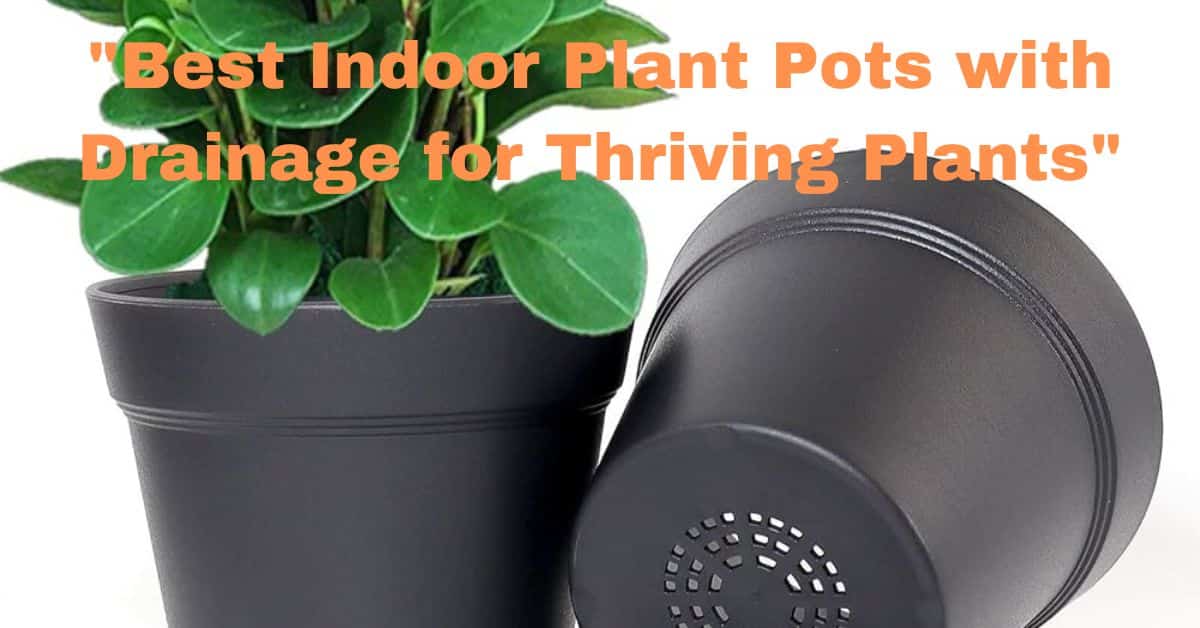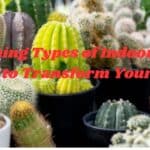Choosing the right pot for your indoor plants can make a huge difference in their overall health and longevity. Many new plant owners don’t realise that a plant pot with proper drainage can prevent a lot of common indoor plant issues like root rot. If you’re ready to give your indoor plants the best care, let’s talk about why pots with drainage holes are essential, explore some of the best options available, and share practical tips for picking the right pot for your plants.
Table of Contents
Why Drainage Holes Matter for Indoor Plants
Plants need a balance of water, air, and nutrients to thrive. While watering helps deliver essential nutrients, overwatering can trap excess moisture in the soil. This is where drainage holes come in handy—they allow excess water to escape, ensuring roots don’t sit in stagnant water and risk root rot, which can be fatal for many indoor plants.
Proper drainage is especially important if you’re new to indoor gardening. It can be easy to overwater, so having a pot with drainage can make a big difference in helping your plants thrive, even if you’re still learning.
Benefits of Choosing Indoor Plant Pots with Drainage
- Prevents Root Rot: By allowing excess water to escape, drainage holes prevent root rot, a common issue that occurs when plant roots sit in waterlogged soil.
- Promotes Better Airflow: Drainage holes allow more oxygen to reach the plant roots, leading to healthier growth.
- Easy to Maintain Soil Quality: With good drainage, nutrients stay balanced, and salts from fertilizers can be flushed out, keeping soil quality optimal.
Top Indoor Plant Pots with Drainage
Here are some of the best options for indoor plant pots with drainage. These pots cater to a range of styles, budgets, and plant types, so you’re sure to find something that suits your needs.
1. Ceramic Pots with Drainage and Saucers
- Why Choose This: Ceramic pots are durable and come in a variety of styles and colors, making them an attractive choice for any decor.
- Ideal For: Decorative plants like succulents, pothos, or ferns.
- Tip: Look for ceramic pots that include a matching saucer to catch excess water, protecting your furniture.
2. Terracotta Pots
- Why Choose This: Terracotta is a porous material that naturally allows excess moisture to evaporate, making it perfect for plants that prefer dry conditions, such as succulents and cacti.
- Ideal For: Succulents, cacti, and plants that require less frequent watering.
- Tip: Be mindful that terracotta pots can dry out soil quickly, so keep an eye on moisture levels, especially during hot weather.
3. Self-Watering Pots with Drainage
- Why Choose This: These pots have a built-in water reservoir that feeds water to the soil as needed, which is convenient for busy schedules.
- Ideal For: Beginners, busy plant owners, and tropical plants like ferns and peace lilies.
- Tip: While self-watering pots with drainage holes offer the best of both worlds, check that water doesn’t accumulate excessively in the reservoir.
4. Plastic Pots with Drainage Holes
- Why Choose This: Plastic pots are affordable, lightweight, and easy to clean. They’re available in various designs and sizes, which is great if you have many plants.
- Ideal For: Various plants, from leafy greens to flowering plants.
- Tip: If you’re worried about aesthetics, use plastic pots with drainage holes as liners inside decorative pots. This way, your plants still get proper drainage without sacrificing style.
5. Fabric Pots
- Why Choose This: Fabric pots offer excellent drainage and air circulation, promoting healthy root growth and preventing root rot.
- Ideal For: Herbs, small indoor trees, or any plant that benefits from aerated soil.
- Tip: Fabric pots can dry out faster, so check soil moisture regularly and water as needed.
6. Metal Pots with Drainage Inserts
- Why Choose This: Metal pots give a modern look but don’t offer natural drainage. Look for metal pots that come with drainage inserts or use them as decorative outer pots.
- Ideal For: Stylish decor and plants with low water requirements.
- Tip: Avoid metal pots in direct sunlight, as they can heat up and harm the roots.
My Personal Experience with Drainage Pots
When I started indoor gardening, I chose decorative ceramic pots without drainage holes simply because they looked nice. But I quickly learned that my plants weren’t doing well due to the lack of drainage. After switching to ceramic pots with drainage and saucers, I noticed an immediate improvement in my plants’ health. The peace lily that was struggling suddenly thrived, and my snake plant perked up within days.
If you’re new to indoor gardening or have had a few plants that didn’t last, investing in good pots with drainage holes is definitely worth it.
Tips for Choosing the Right Indoor Plant Pot
- Consider Your Plant Type: Different plants have different watering needs. Succulents and cacti, for instance, prefer well-draining pots like terracotta, while tropical plants enjoy more moisture and may do better in plastic or self-watering pots.
- Match Pot Size to Plant Size: A pot that’s too large holds excess moisture, increasing the risk of root rot. On the other hand, a pot that’s too small can stunt growth.
- Go for Function and Aesthetics: While drainage is essential, you can still find pots that match your decor style. Look for pots with a removable liner or use a decorative outer pot to blend with your home design.
- Avoid Pots Without Drainage (Unless You’re Experienced): Pots without drainage can work, but they require close attention to watering. If you must use one, consider drilling holes or using a liner with drainage holes inside the pot.
Creative Ideas for Decorating with Drainage Pots
Drainage pots don’t have to be purely functional. Here are some ways to use them creatively in your decor:
- Grouping Plants in a Tray: Place a few pots with drainage holes on a decorative tray or saucer. This not only catches excess water but also creates a cohesive look.
- Using Hanging Pots with Drainage: Many hanging planters now come with built-in drainage, so you can hang plants like pothos or ivy in windows without worry.
- Tiered Plant Stands: Display several potted plants with drainage on a tiered stand to create an indoor plant sanctuary. This is ideal for small spaces like apartments.
- Layering with Decorative Pot Covers: Use a plastic or fabric pot with drainage inside a stylish pot cover. This setup provides functionality and style while keeping surfaces dry.
Final Thoughts: Your Indoor Plants Will Thank You!
When it comes to keeping indoor plants healthy and happy, choosing the right pot with drainage can make all the difference. Not only do these pots promote proper water flow and oxygenation, but they also reduce common issues like root rot and overwatering. For indoor gardening enthusiasts of all levels, pots with drainage holes are an essential tool for creating a thriving indoor garden.
Whether you’re just starting out or looking to upgrade your plant care game, invest in some well-draining pots. With the right pot and care routine, your indoor plants will be well on their way to becoming lush, vibrant additions to your home.










